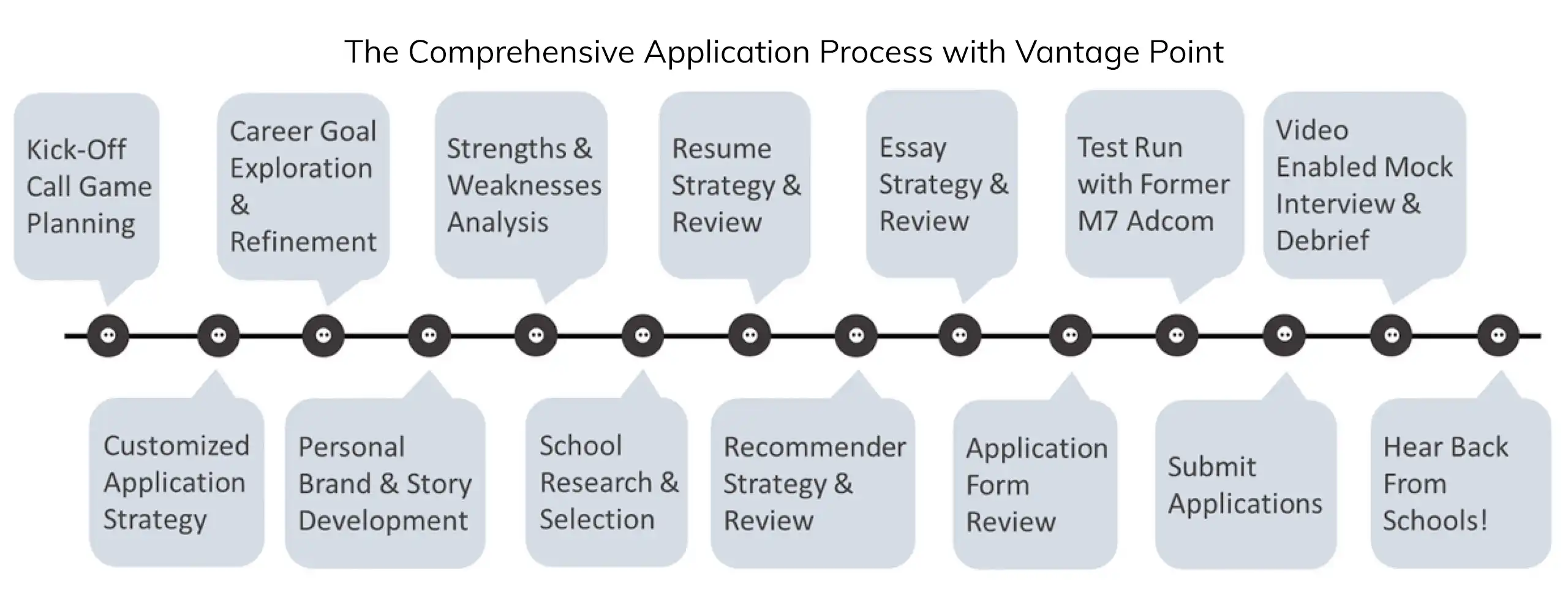Harvard Business School – An Insider’s Guide
This week we’re kicking off a new series! Follow along as we share ‘Insider’s Guides’ for many of the top MBA programs, beginning with – you guessed it – Harvard Business School. We’ll go beyond the published facts and statistics, sharing what it’s really like to attend some of the most highly sought-after schools in the world. How challenging is the coursework and how are grades determined? What is the culture really like? What extracurriculars are most popular? And more!
Without further ado, here is our Insider’s Guide to Harvard Business School.
The Basics
Located in Boston, MA, Harvard Business School’s esteemed program enrolls a large class of ~1,000 students each year. It’s no surprise that competition is fierce, with the median GMAT score hovering around 730 (163V/164Q for the GRE) and the average undergraduate GPA settling in at 3.69. Interviews are by invitation only and offered to only 20-30% of applicants. For more insight into who really gets into Harvard Business School, you may be interested to read this recent article.
Academics
You likely know that Harvard Business School’s curriculum centers on the case method of instruction. The goal of the case method is for students to lead classes by sharing opinions/stories while shepherded by professor. As such, class participation is a huge part of student grades (often 50%, evaluated on quality as well as quantity).
Speaking of grades, Harvard Business School does not have an official grade non-disclosure policy, but in practice there is no grade disclosure to employers. Grades are assigned on a forced curve, with majority of students getting a ‘2’ (Pass) in each class. The bottom 10% of each course is graded ‘3’. Five ‘3’s in a year results in having to explain one’s position in front of a faculty committee. This doesn’t affect many (1-2%) but creates a level of stress early on.
First year is Required Curriculum (RC) year where there are no electives and students cannot waive courses. Different from other schools, technical skills classes are omitted (statistics, decision analysis) from RC and taught through voluntary pre-MBA analytics program and online tutorials. Second year is Elective Curriculum (EC) year. Students take up to five courses per semester (all electives) including up to two cross-registered courses (at another Harvard graduate school) per year. There are no majors to select at HBS.
Culture & Student Experience
The ‘typical’ Harvard Business School student is accomplished and ambitious, but humble.
One thing that comes with having a large class is the diversity, both in terms of industry and background. Learning from your classmates is an extremely important part of the HBS experience and comes through in the case learning method.
While people tend to think of HBS as having a large class, your core social circle may be much smaller than expected. Each Harvard Business School class is divided into 10 sections of around 90-100 people each. Most students tend to socialize within their section. The social scene is characterized by many organized events (set up by student organizations and sections) with one HBS-wide black-tie event per semester.
In addition to a section, in the fall of first year, students are randomly assigned a discussion group (consisting of students outside your section), which meets each morning to prepare for class together so that you can each contribute effectively to your section-based class discussions.
There is a lottery for the vast majority of Harvard housing (on- and off-HBS campus including highly desired Soldiers Field Park (SFP) and One Western Apartments). Dorms are also available on campus, but some are very small with shared bathrooms (tradeoff for price). Roughly 70% of students live on campus 1st year.
Extracurriculars
HBS is a large school with a huge variety of resources – it is critical to think deeply about what you want from the experience before you attend, or you may get caught by the fear of missing out and stray from your own unique priorities. There are clubs and conferences that cater to all interests and, if you can’t find one that caters to you, you can easily start one with resources at your fingertips. Healthcare, Tech, VC/PE, and Retail and Luxury Club are especially popular but sign up for what YOU are interested in!
In terms of social treks, Yacht Week before school starts is popular and so is Colombia Trek for spring break. The Outdoors Club has a ski trip that is very popular for first years as well. Again, social outings and trips are constant, and you may want to opt for smaller trips instead of 200-person treks. HBS truly is a ‘make your own journey’ experience.
The RC curriculum entails international travel in the spring of first year; second-year students can participate in IFCs (school-organized international trips with an educational component) or Treks (student-organized international trips more focused on tourism/cultural exploration). Harvard Business School does not offer an exchange term abroad.
Closing Thoughts
We hope this article provided insight into aspects of the Harvard Business School experience you won’t easily find on the school’s website or in the forums. Having a nuanced understanding of what makes each program unique will not only help you decide where to apply (or attend), it will also help you put your best foot forward during the admissions process. Best of luck on your journey. If we can be of assistance, reach out to request an initial consultation.
Katie is a passionate mentor and coach, helping her clients craft a unique, compelling story by leveraging her experience as a corporate executive, alumni interviewer, and campus recruiter. Before completing her MBA at Kellogg, Katie spent five years in banking where she learned practical finance skills as well as how to operate in a demanding, high pressure environment. She pursued an MBA in order to transition to an industry role where she could utilize her finance knowledge to drive change within an organization. Post-MBA, she worked in finance and strategy for a leading CPG firm, progressing to an executive role leading the finance function for a $2B business segment. Her experience managing diverse teams led to a passion for developing others. In addition to her day-to-day responsibilities, she led her firm’s MBA recruiting efforts and served as an alumni admissions interviewer for Kellogg.





Pingback: The M7 Business Schools: A Comprehensive Guide To The Top MBA Schools
March 6, 2025 12:39 pmPingback: Best MBA Programs for Private Equity and Venture Capital | Vantage Point MBA
March 13, 2025 4:33 pm